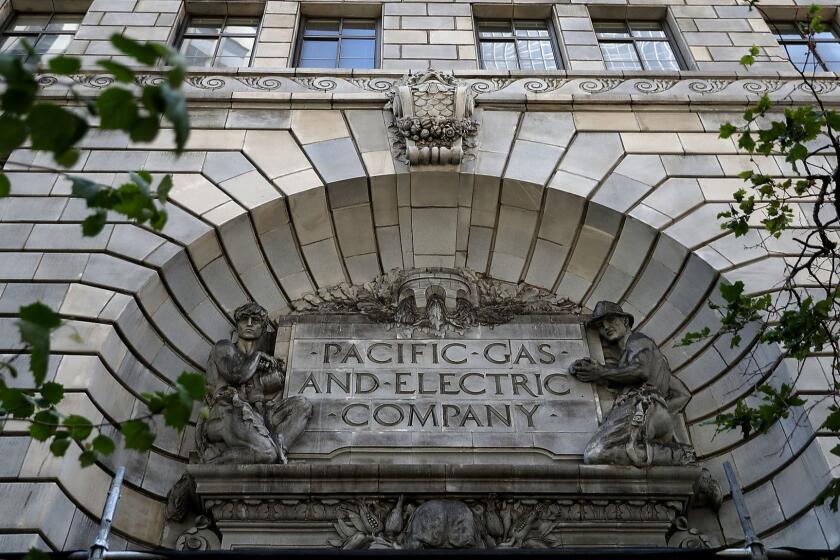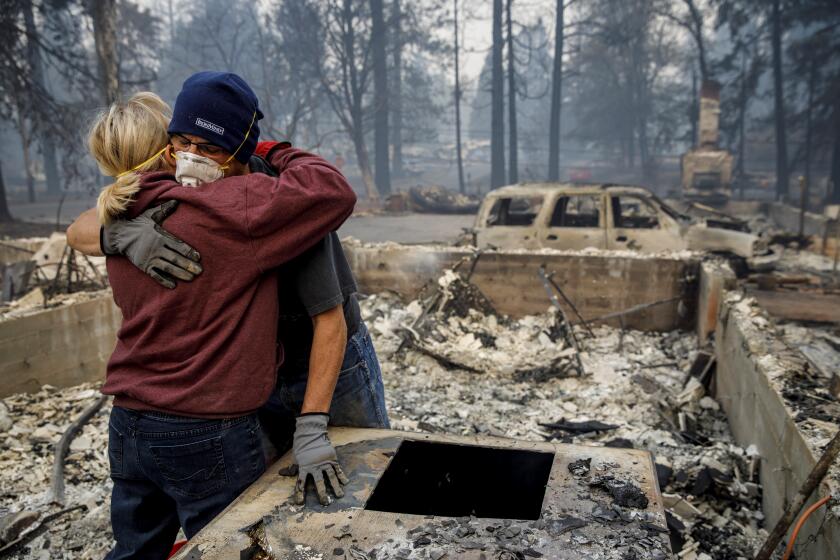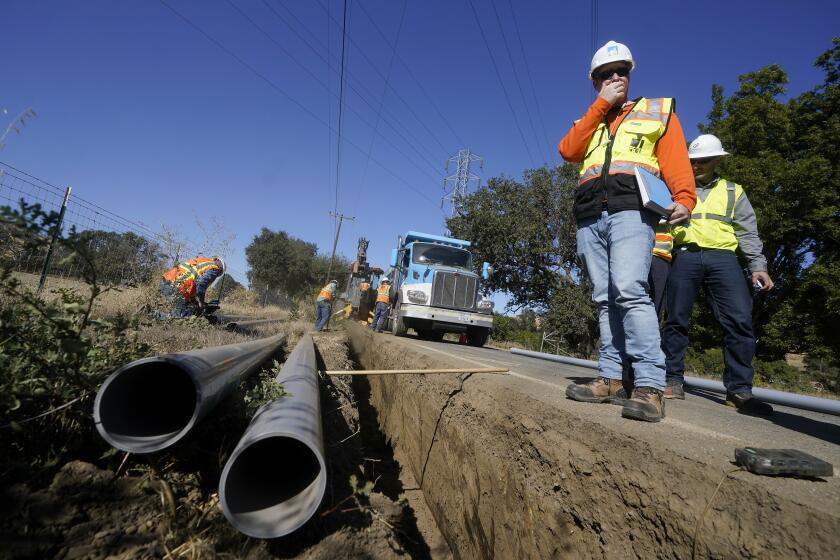California Supreme Court says PG&E can’t be sued over safety-related power shutoffs

- Share via
Pacific Gas & Electric customers cannot sue the power giant for losses incurred during power shutoffs designed to protect the public from wildfires, the California Supreme Court ruled Monday.
Such litigation would interfere with the California Public Utilities Commission’s “comprehensive regulatory and supervisory authority” over such safety shutoffs and is therefore barred under state law, Justice Goodwin Liu wrote in a unanimous decision for the state’s high court.
The ruling is a significant win for embattled PG&E, which crawled out of bankruptcy in 2020 after collapsing under $30 billion in liabilities from wildfires sparked by its equipment. Litigation over safety cutoffs, if allowed, would have potentially exposed the company to billions of dollars of additional liabilities.
Now PG&E is left to fend for itself as a new wildfire season is already underway.
The company in a statement Monday said its “most important responsibility is the safety of our customers and the communities we serve,” which such shutoffs aim to protect. But the utility also said it is working to improve service during dangerous weather conditions.
“We know that losing power significantly disrupts people’s lives,” the company said.
It said improvements in the works include “updating forecasting and fire-risk modeling; improving technology and tools to identify scope and potential impacts; and strengthening community engagement with stakeholders.”
The ruling stems from a separate federal case in which plaintiff Anthony Gantner accused PG&E of harming him and other customers by repeatedly shutting off power to reduce the risk of its infrastructure igniting wildfires during extreme weather conditions in the fall of 2019.
Gantner alleged the shutoffs were necessary only because PG&E had failed to properly maintain its power grid for decades. He claimed in court that the company owed him and other customers $2.5 billion to cover “loss of habitability of their dwellings, loss of food items in their refrigerators, expenses for alternative means of lighting and power, ... loss of cell phone connectivity, dangerous dark conditions, lack of running water, and loss of productivity and business.”
Gantner’s attorneys said in a written statement Monday that it was “a sad day for Californians,” as the court’s opinion “leaves consumers footing the bill” for days- and weeks-long power shutoffs “no matter how negligent PG&E is in maintaining its electric grid and no matter how much damage it causes to its customers,” just as long as it follows the commission’s rules for implementing such shutoffs.
They wrote that they “strongly disagree” with the court’s conclusion that such litigation would interfere with the commission’s authority over PG&E. They wrote that the decision “drastically shifts the balance of power” from consumers to utilities, and urged California lawmakers to “step in” and change that.
The Camp fire in Paradise revealed vulnerabilities in forest management, electrical equipment, city planning and evacuations. Has the state made strides against those shortcomings?
Both a federal Bankruptcy Court and a federal district court had previously rejected Gantner’s claims as barred under state law. He appealed to the U.S. 9th Circuit Court of Appeals.
The 9th Circuit found that the case raised questions of California state law and so asked the California Supreme Court — which is the ultimate authority on such matters — to weigh in.
The state high court’s ruling does not conclude the litigation against the power utility, but it will inform the 9th Circuit’s decision in the matter.
Extreme weather caused by global warming has for years increased the threat of raging wildfires across the American West, with extreme heat and drought turning dense forests into powder kegs. Meanwhile, aging power infrastructure across California has presented a significant risk for igniting such fires.
The combination has been a disaster — with utility-sparked wildfires in recent years devastating vast swaths of the state, killing people and destroying small towns in their wake.
The Camp fire of 2018, which was caused by a failed transmission line in the Sierra Nevada foothills, became the deadliest wildfire in California history — destroying the town of Paradise and killing 85 people.
PG&E has agreed to pay out billions of dollars to fire victims and spend billions more to upgrade its infrastructure to reduce fire threat. The company also took on billions more in debt to emerge from bankruptcy. And it is not the only one footing such fire-related costs.
The electric and gas bills of about 16 million people in California are expected to increase by an average of more than $32 per month next year in part to cover the costs of burying the company’s power lines and reducing the risk of fire from them.
About 16 million people in California will pay higher electric and gas bills next year.
The California Public Utilities Commission, which sided with PG&E in the litigation, maintains guidelines for public safety shutoffs, calling on utilities to “proactively cut power to lines that may fail in certain weather conditions in order to reduce the likelihood that their infrastructure could cause or contribute to a wildfire.”
The commission also requires utilities to initiate shutoffs only as a last resort, to give customers as much advance warning of such shutoffs as possible and to create plans to mitigate the harms caused by such shutoffs.
The 9th Circuit will consider the California Supreme Court’s decision in its ultimate ruling in the federal case, which for now remains pending.
Liu noted that the high court’s decision does not preclude litigation against the power company based on more narrow claims of damages caused by specific negligence on the part of the company.
More to Read
Sign up for Essential California
The most important California stories and recommendations in your inbox every morning.
You may occasionally receive promotional content from the Los Angeles Times.














